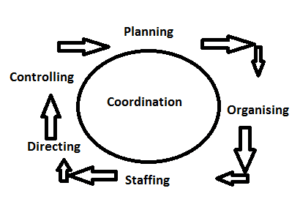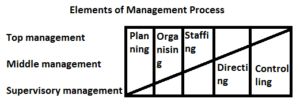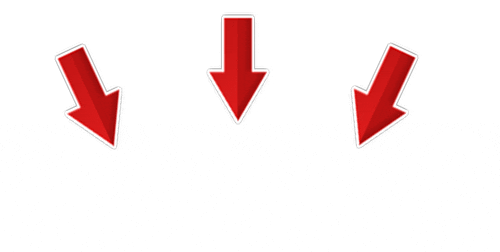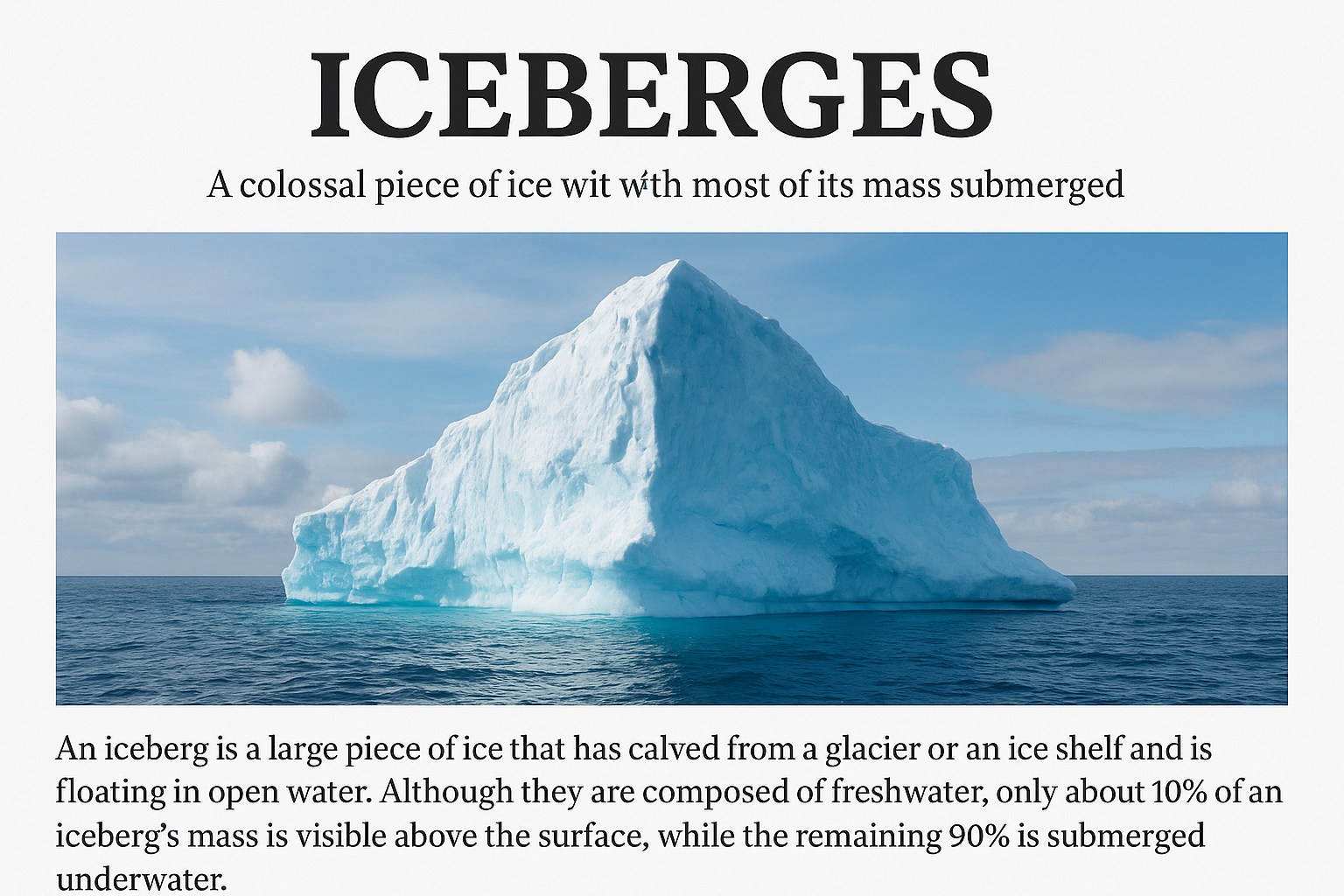Contents
Modern Management Recent Trends
Development in technology, science, trade, business and employment has increased the size and complexity of management and organization. Quality standards, consumer’s awareness, after sale-service, mass production, automation, human resource development, and stress on training, trade union demands and use of computer based programmers are adding new/recent trends in management.
Public and private both the sectors have increased. Challenges and manifold responsibilities are increased demanding technocrat role of the managers and demand for MBA study is also increasing.
CLICK HERE FOR > Principle of industrial safety management
Areas of such modern management trends are :-
- Information Technology
- Electronic Communication -advanced computer fax, Email, Internet
- Importance of human relations
- Challenges by trade unions
- Impact of Govt. policy
- Marketing
- Publicity
- Leadership
- Competition
- Variety of Goals
New developments, systems and approaches in all above areas, provide Modem Management Thoughts (new trends) Thus, the management thoughts are changing, and depending on modern trends.
Definitions on management are available as under:
- The accomplishment of desired objectives by establishing an environment favourable to performance by people operating in organized groups.
- It includes the managerial functions of (1) Establishment of objectives and (2) Process of planning, organizing, controlling and directing i.e. motivating and coordinating to attain those objectives and innovating to improve the objectives for the future –Rustom S. Davar.
- It is a multi-purpose organ that manages a business and manages managers and manages worker and work- Peter Drucker.
- It is the art of getting things done through people- Lawrence.
- It is the art of getting things done through and with people in formally organized groups – Harold Koontz.
- The task of creating the internal environment for organized efforts to accomplish group goals. In co-ordination group activity, the manager pains, organizes staffs, directs and controls.
- The function of executive leadership anywhere – Raif C. Davis.
- Management is a distinct process dealing with group activity.
- The objectives are achieved through establishing salient relationships between human and nonhuman resources.
- The manager does not necessarily perform things for himself, but, accomplishes objectives through others in the group situation.
- It is the art and science of decision making and leadership – DJ. dough.
- It is an art of knowing exactly what you want men to do and seeing that they do it in the best and cheapest way – F.W. Taylor.
- To manage is to forecast and plan, to organize, to command, to co-ordinate and to control – HiriJlayol.
- Management in the co-ordination of all resources all through the process of planning, organizing, directing and controlling in order to attain stated goals – Henry L. Sisk.
- Management is a social process entailing responsibility for the effective planning and regulation of the operations of an enterprise – E.F.L Brech.
CLICK HERE FOR > Key Elements of a Health and Safety Management System
Nature (Characteristics) of Management:
- It is a group of people and functions both: Management is a group of people with different levels depending on responsibility and it is a group of functions (process elements) like planning, organizing, staffing, directing, controlling, reporting, budgeting, motivating, coordinating etc.
- It is universal: Whether it is a family, office, club, army, school, trade, industry or business, management is required every-where. Its fundamental’s principles are applicable in all areas of organized activity.
- It is an Art & Science both: As it requires knowledge, skill, creativity etc., it is an art. As it requires universal application of principles for definite results and systematic knowledge, mathematics and use of scientific rules or study, it is a science also.
- It is an executive function: It is a technique by which the objectives are predetermined and obtained by methods required.
- it is purposeful: Management without objectives is meaningless. It is creative, decides goals and try to achieve them. Therefore, it is purposeful.
- It is dynamic: because it changes with time, need, objectives and challenges of business to be successful at all times. It cannot be static.
- It is intangible: because the process of management is invisible though the managers are visible.
- It is leadership: Manager Acts as a leader of the groups creates environment for followers and gets work done through them. Therefore, it is a leadership function.
- It is decision-making: All managers have to take decisions with utmost care using data and analysis to obtain results. Without decision, management is not possible.
- Coordination as unifying force: The essence of management lies in co-coordinating all its efforts into a team. It requires harmony instead of conflicts. It integrates human and other resources.
- It is a practice & profession both: Managers are made and not born. They learn by practice. The whole management process is practice to acquire goals. Only after training, skill and experience, it can become a profession like management consultancy.
- It is a social process: Management is by people, through people and for people. Human factor is most important. After all everything is for human beings. Therefore, it is a social process.
- It is situational or contingency: because decisions are dependable on situations which are changeable.
- It is multidisciplinary: It derives knowledge from several disciplines like engineering, science, economics, mathematics, psychology, sociology.
- it is a continuous process: It is an ongoing process continuing to operate till achievement of goals.
- It strives for organizational goals: If there is no management, there may be conflict between individual (personal) goals and organizational goals. Management has to work for organizational goals (objectives).
CLICK HERE FOR > Process safety and risk management
Impotence (Significance) of Management:
- It is a key to economic success of nations, organizations and all group activities.
- It accelerates the process of development and cuts its cost.
- It accelerates capital formation and progress.
- As Peter Drucker says ‘only superior management, competence and continuously. Improved management performance can keep us progressing can prevent our becoming smug, self-satisfied and lazy.
ELEMENTS OF MANAGEMENT FUNCTIONS


All above criteria conclude seven basic elements or functions of management as follow:
- Setting up the objectives well defined.
- Planning the course of action to be taken to attain above objectives.
- Organizing the structure of staff and assigning specific responsibilities to different individuals (members, workers) i.e. delegation and decentralization of power and authority.
- Directing and Co-coordinating the efforts of all members working for the organization.
- Controlling the activities of the members through setting up standards for performance. It includes monitoring and evaluating that the objectives are achieved and follow up for those to be achieved.
- Motivating the members to co-operate with each other for the achievement of the objectives.
- Innovating to improve the objectives for the future.
CLICK HERE FOR > MANAGEMENT INFORMATION SYSTEM (MIS) FOR SAFETY
The terms management, organization and administration are used side by side. The term ‘administration’ is used to refer to the activities at the higher levels of the management such as Government administration is the higher management for the largest section (people). The term ‘organization’ is generally used for the structure of responsibilities and relationship attached to the executive and supervisory posts.
The words direction, superintendence and supervision are also used side by side to include determination of objectives and policy and to exercise overall conifer over the affairs of an enterprise, directing subordinates, motivating and leading them, communicating, getting employees to accomplish and overseeing their tasks.
CLICK HERE FOR > Span of Safety Management
Administration is that part of the management which lays down the pokies programmers and procedures for which the organization and its management strive amperage to accomplish the predetermined objectives.
Organization that part of the management which lays down the structure of responsibilities to distribute activities or functions among the managerial, supervisory and specialist personnel and the interrelationship among them.
Thus, administrator can he said ‘brain’ or ‘mind’ and its functions ‘thinking the organization is ‘head’ and ‘body’ and I function I ‘doing’. The management is ‘eyes’ anti its function is ‘seeing’ that the things are done (by the organization) as thought (by the administration). Ali the three are the organs of one body or entity.
CLICK HERE FOR > SAFETY MANAGEMENT ITS RESPONSIBILITIES
Management are of many types such as factory management, business management, safety management, materials management, project management etc.
The materials management is defined as the function responsible for the co-ordination of planning, sourcing, purchasing, moving, strong and controlling materials in an optimum manner so as to provide a pre-decided service to the controlling materials in an optimum manner so as to provide a pre-decided service to the customer at a minimum cost.
NOW ITS YOUR TURN / अब आपकी बारी
PLEASE SHARE THIS ARTICLE WITH YOUR RELEVANT FRIENDS






